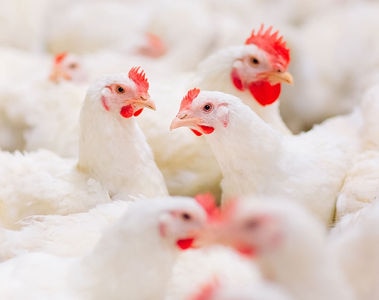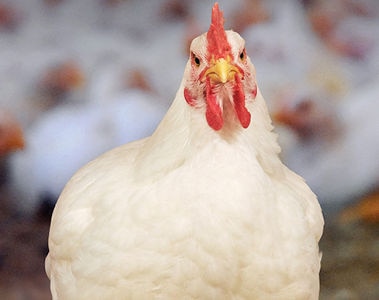Blake, D. P., Knox, J., Dehaeck, B., Huntington, B., Rathinam, T., Ravipati, V., … Tomley, F. M. (2020). Re-calculating the cost of coccidiosis in chickens. Veterinary Research, 51(1), 115. https://doi.org/10.1186/s13567-020-00837-2
Bozkurt, M., Ege, G., Aysul, N., Akşit, H., Tüzün, A. E., Küçükyılmaz, K., Borum, A. E., Uygun, M., Akşit, D., Aypak, S., Şimşek, E., Seyrek, K., Koçer, B., Bintaş, E., & Orojpour, A. (2016). Effect of anticoccidial monensin with oregano essential oil on broilers experimentally challenged with mixed Eimeria spp. Poultry Science, 95(8), 1858–1868. https://doi.org/10.3382/ps/pew077
Burt, S. (2004). Essential oils: Their antibacterial properties and potential applications in foods—A review. International Journal of Food Microbiology, 94(3), 223–253. https://doi.org/10.1016/j.ijfoodmicro.2004.03.022
Cheeke, P. R. (2000). Actual and potential applications of Yucca schidigera and Quillaja saponaria saponins in human and animal nutrition. In W. Oleszek & A. Marston (Eds.), Saponins in food, feedstuffs and medicinal plants (pp. 241–254). Springer. https://doi.org/10.1007/978-94-015-9339-7_25
de Sousa, D. P., Damasceno, R. O. S., Amorati, R., Elshabrawy, H. A., de Castro, R. D., Bezerra, D. P., Nunes, V. R. V., Gomes, R. C., & Lima, T. C. (2023). Essential oils: Chemistry and pharmacological activities. Biomolecules, 13(7), 1144. https://doi.org/10.3390/biom13071144
El-Shall, N. A., Abd El-Hack, M. E., Albaqami, N. M., Khafaga, A. F., Taha, A. E., Swelum, A. A., … El-Tarabily, K. A. (2022). Phytochemical control of poultry coccidiosis: A review. Poultry Science, 101(1), 101542. https://doi.org/10.1016/j.psj.2021.101542
Fenwick, G. R., Price, K. R., Tsukamoto, C., & others. (1991). Saponins. In F. J. P. D. Mello, C. M. Duffus, & J. H. Duffus (Eds.), Toxic substances in crop plants (pp. 285–327). The Royal Society of Chemistry.
Gholami-Ahangaran, M., Ahmadi-Dastgerdi, A., Azizi, S., Basiratpour, A., Zokaei, M., & Derakhshan, M. (2022). Thymol and carvacrol supplementation in poultry health and performance. Veterinary Medicine and Science, 8(1), 267–288. https://doi.org/10.1002/vms3.663
Gordillo Jaramillo, F. X., Kim, D.-H., Lee, S. H., Kwon, S.-K., Jha, R., & Lee, K.-W. (2021). Role of oregano and Citrus species-based essential oil preparation for the control of coccidiosis in broiler chickens. Journal of Animal Science and Biotechnology, 12, Article 47. https://doi.org/10.1186/s40104-021-00569-z
Imran, A., & Alsayeqh, A. F. (2022). Anticoccidial efficacy of Citrus sinensis essential oil in broiler chickens. Pakistan Veterinary Journal, 42(3), 461–466.
Kozłowski, K., Jankowski, J., Juśkiewicz, J., Zduńczyk, Z., & Dąbrowski, J. (2022). Yucca schidigera improves performance and lowers oocyst counts in Eimeria-challenged broilers. Animals, 12(13), 1668. https://doi.org/10.3390/ani12131668
Mitsch, P., Zitterl-Eglseer, K., Köhler, B., Gabler, C., Losa, R., & Zimpernik, I. (2004). The effect of two different blends of essential oil components on the proliferation of Clostridium perfringens in the intestines of broiler chickens. Poultry Science, 83(4), 669–675. https://doi.org/10.1093/ps/83.4.669
Muthamilselvan, T., Kuo, T. F., Wu, Y. C., & Yang, W. C. (2016). Herbal remedies for coccidiosis control: A review of plants, compounds, and anticoccidial actions. Evidence-Based Complementary and Alternative Medicine, 2016, 2657981. https://doi.org/10.1155/2016/2657981
Oelschlager, M. L., Rasheed, M. S. A., Smith, B. N., Rincker, M. J., & Dilger, R. N. (2019). Effects of Yucca schidigera-derived saponin supplementation during a mixed Eimeria challenge in broilers. Poultry Science, 98(8), 3212–3222. https://doi.org/10.3382/ps/pez051
Ouwehand, A. C., Tiihonen, K., Kettunen, H., Peuranen, S., Schulze, H., & Rautonen, N. (2010). In vitro effects of essential oils on potential pathogens and beneficial members of the normal microbiota. Veterinární Medicína, 55(2), 71–78. https://doi.org/10.17221/152/2009-VETMED
Saeed, Z., & Alkheraije, K. A. (2023). Botanicals: A promising approach for controlling cecal coccidiosis in poultry. Frontiers in Veterinary Science, 10, 1157633. https://doi.org/10.3389/fvets.2023.1157633
Vincken, J. P., Heng, L., de Groot, A., & Gruppen, H. (2007). Saponins, classification and occurrence in the plant kingdom. Phytochemistry, 68(3), 275-297. https://doi.org/10.1016/j.phytochem.2006.10.008



